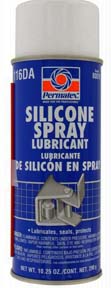

Wet Sanding
A sheet of wet/dry #320 sandpaper should be used to wet sand the bottom and rails of your surfboard
for better performance. By using water and the #320 paper, sand the board from nose to tail in strokes parallel to the stringer. This will remove the wax of the finish coat and small blemishes and allow the water to “stick” rather than bead up. The resulting water to water lubrication will increase hull speed and control.
If you are skeptical you might ride the board as is and then ride the board after wet sanding. I think you will be surprised at the result. The board can be lightly sanded periodically with the 320 paper and water to freshen up and maintain the wet sanded feel.
Flex Fins and Fin Placement
The fin that comes with your surfboard is flexible. It is made from volan fabric which has a unique green tint. Volan bonds better with the resin and sustains the life of the flex. Flex fins made from silene fabric are more clear, tend to be stiffer with the same foil and will deteriorate very quickly as the bond between resin and fabric breaks down.
The fin is foiled with a "spine" throughout. This maintains volume through the tip to produce a “concave” flex as opposed to the tip just bending over. Because the foil is very thin it is also very delicate. Any nicks or abrasions should be sanded out immediately to prevent breakage on a impact. The board should never be left sitting on the fin, particularly in a warm car, or the fin will bend and take a set to one side.
Fin placement is critical and a learned. You can get used to the fin in any position but to maximize the acceleration of the board out of a turn placement is critical. I would suggest that you start with the fin about 11 or 12 inches up; measuring from the tail block to trailing edge of the fin. There should be small marks along the fin channel used as reference points. Ride the board a bit to get the initial feel and then move the fin forward 1/2” and ride it again; ideally in the same conditions. At one point the board will seem to accelerate out of a forehand turn more quickly and smoothly. I have had boards that worked with the fin places anywhere from 12 to 14 inches up. You can become sensitive to 1/4” movements. Notice the difference in effects while paddling.
It is a trial and error process and the results can be different for each person even on the same surfboard. We are all physically unique in body and style. I surf very forward and seldom pivot off the tail. My fin (or fins) are usually set more forward. By having the ability to move the fin you can determine what placement is best for you, your style and the waves you ride.. Please try different positions and try to evaluate the effect in the surfboards behavior from one position to the next. Feedback and or questions about placement are always appreciated via e-mail.
Fin Installation
The fin boxes have two layers of six ounce fiberglass over create very tight fit and prevent wobble that can weaken the box The reinforcement prevents broken or cracked boards at the front of the fin box and creates a strong base for the flex fin. I suggest spraying the base of the fin with silicone spray and then using a rubber mallet to tap the fin into place. Only tap the center of the leading edge to seat the fin. Never hit the fin tab, the fin tip or the thin trailing edge.


![]()